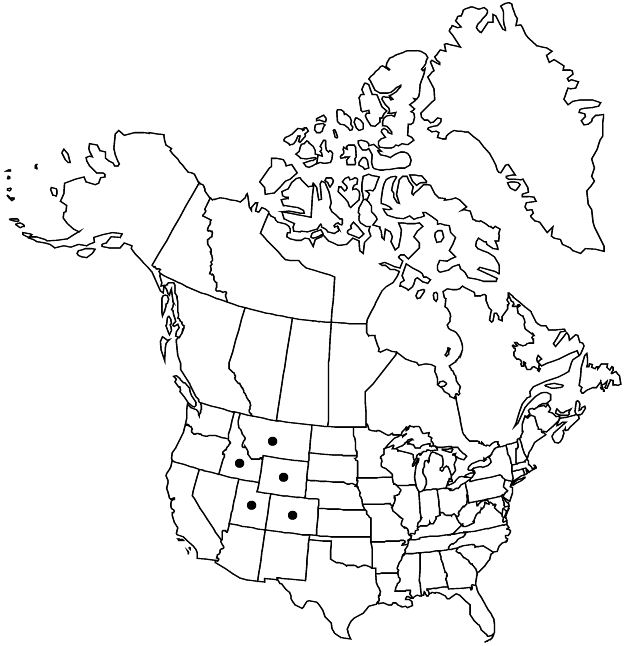Potentilla modesta
in N. L. Britton et al., N. Amer. Fl. 22: 331. 1908.
Caudex branches usually not sheathed with marcescent whole leaves. Stems ascending to nearly erect, (0.3–)0.5–1.5(–2.5) dm. Basal leaves usually palmate, rarely also ternate on same plant or subpalmate, 2–6(–8) cm; petiole 0.5–3.5(–5) cm, long hairs common to abundant, ± ascending to almost spreading, 1–2 mm, weak to ± stiff, scarcely to ± verrucose, short and/or crisped hairs common to abundant, cottony hairs absent, glands sparse to common; leaflets (3–)5, proximalmost separated by 0–1 mm, central obovate to oblanceolate-elliptic, 0.5–2(–2.5) × 0.5–1(–1.5) cm, petiolules 1 mm, distal 3/4 to nearly whole margin incised 1/2–3/4 to midvein, teeth 2–5 per side, (1–)2–5 mm, apical tufts 0.5–1 mm, abaxial surfaces white, long hairs common to abundant, cottony-crisped hairs dense, short hairs and glands absent or obscured, adaxial grayish green, long hairs common to abundant, 0.5–1.5 mm, ± stiff, rarely soft, short and/or crisped hairs sparse to common, cottony hairs absent, glands sparse to common. Cauline leaves 1–2. Inflorescences (1–)3–10-flowered, congested or ± elongating in fruit, branch angle 20–35°. Pedicels 0.2–0.5 cm, proximal to 1.2 cm. Flowers: epicalyx bractlets narrowly elliptic, 1.5–3 × 0.5–1 mm; hypanthium 3–4 mm diam.; sepals 2.5–4 mm, apex ± acute, glands abundant, usually not obscured; petals yellow, ± overlapping, 3.5–5 × 3–4 mm, slightly longer than sepals; filaments 1 mm, anthers 0.3–0.7 mm; carpels 20–40, styles 1 mm. Achenes 1 mm.
Phenology: Flowering summer.
Habitat: Alpine tundra, fellfields, talus slopes, cliffs, usually on limestone
Elevation: 2500–3900 m
Distribution

Colo., Idaho, Mont., Utah, Wyo.
Discussion
Potentilla modesta is the dominant component of what has previously been called P. rubricaulis in the Intermountain Region (for example, N. H. Holmgren 1997b, including illustration). This and other species of alpine Potentilla often grow in mixed populations, which contributes to confusion and mistaken identifications. In general, P. modesta has a more compact inflorescence and more consistently palmate basal leaves than sympatric members of the section. Intergrades with P. jepsonii (sect. Pensylvanicae) can also be problematic, though leaves of the latter are generally subpinnate and abaxially grayish rather than white.
The epithet modesta is misapplied in the combination Potentilla concinna var. modesta, which S. L. Welsh et al. (1993) used for plants mostly placed here in P. concinna var. divisa (sect. Concinnae).
Selected References
None.